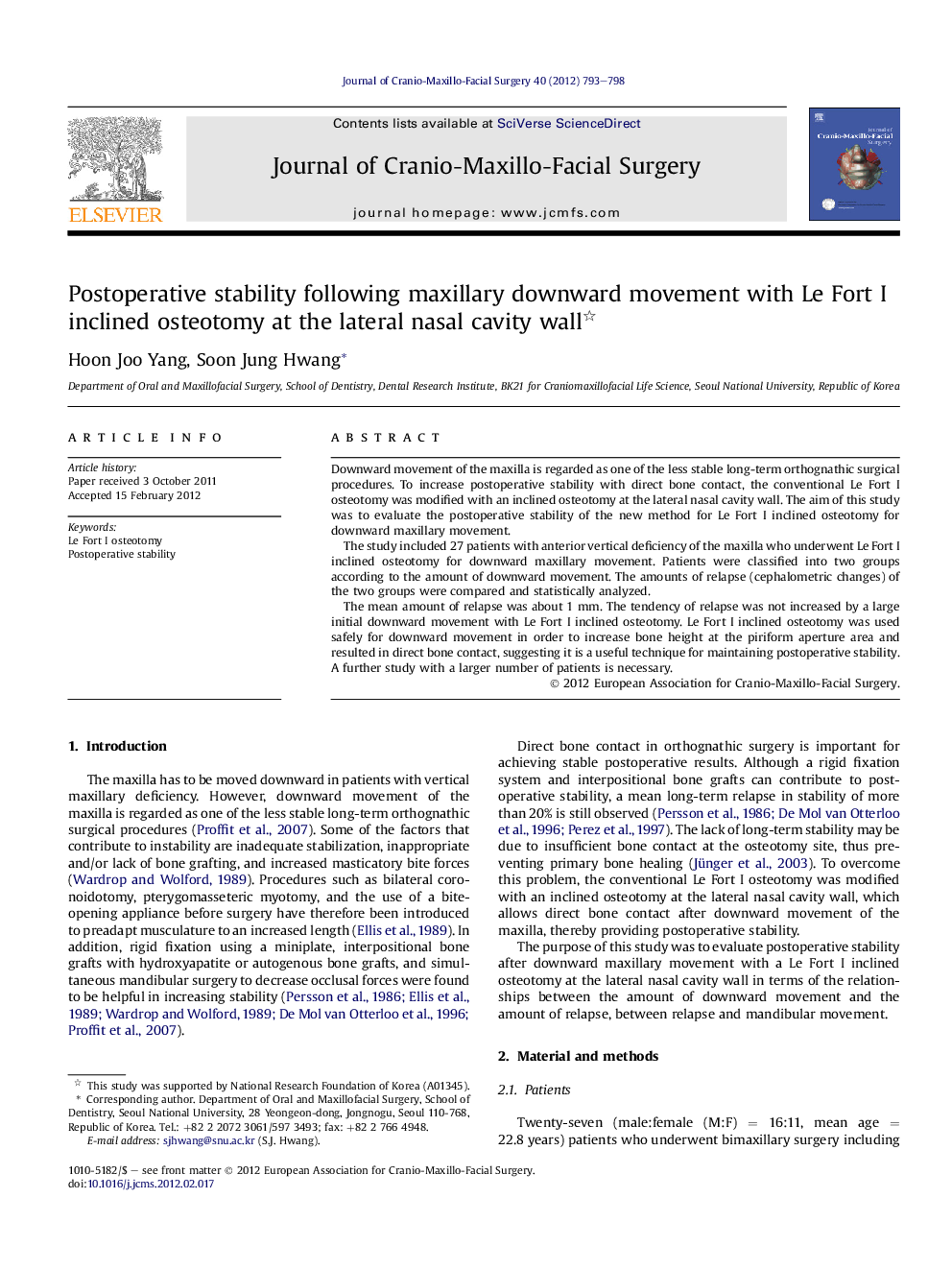| Article ID | Journal | Published Year | Pages | File Type |
|---|---|---|---|---|
| 3143387 | Journal of Cranio-Maxillofacial Surgery | 2012 | 6 Pages |
Downward movement of the maxilla is regarded as one of the less stable long-term orthognathic surgical procedures. To increase postoperative stability with direct bone contact, the conventional Le Fort I osteotomy was modified with an inclined osteotomy at the lateral nasal cavity wall. The aim of this study was to evaluate the postoperative stability of the new method for Le Fort I inclined osteotomy for downward maxillary movement.The study included 27 patients with anterior vertical deficiency of the maxilla who underwent Le Fort I inclined osteotomy for downward maxillary movement. Patients were classified into two groups according to the amount of downward movement. The amounts of relapse (cephalometric changes) of the two groups were compared and statistically analyzed.The mean amount of relapse was about 1 mm. The tendency of relapse was not increased by a large initial downward movement with Le Fort I inclined osteotomy. Le Fort I inclined osteotomy was used safely for downward movement in order to increase bone height at the piriform aperture area and resulted in direct bone contact, suggesting it is a useful technique for maintaining postoperative stability. A further study with a larger number of patients is necessary.
